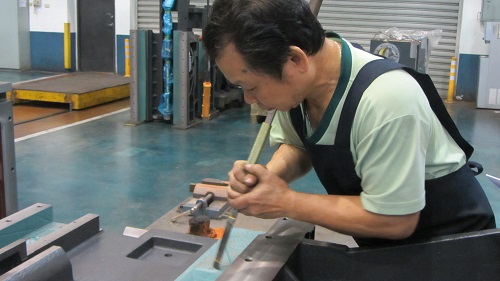
Rising from 50.1 in March to 51.0 in April, the fast increases in new orders and output, and a renewed increase in employment, all boosted the headline index. However, inventories of inputs continued to decline.
The majority of the monitored ASEAN nations indicated an improvement in the health of their manufacturing sector. Five of the seven countries covered by the survey recorded a PMI reading above the neutral 50.0 level, up from four in March.
Myanmar extended its lead within the ASEAN manufacturing rankings, as growth in its manufacturing sector picked up noticeably in April. Vietnam and the Philippines were tied in second place, with both registering faster improvements in operating conditions. The health of Indonesia’s manufacturing economy also strengthened to a greater extent.
Singapore reported an improvement in operating conditions for the first time in six months while Thailand remained in contraction, though the rate of deterioration slowed from March. Malaysia also signalled a decline in the health of its manufacturing sector, with the pace of deterioration the steepest since October 2017.
Overall, client demand improved across the region in April. Latest data suggested stronger domestic demand was a key driver of growth, as export sales fell. Notably, new orders rose to the greatest extent in 2018 so far.
Firmer demand conditions led manufacturers to ramp up production across the region. The rate of output growth accelerated from March to the strongest for a year.
In response to increased sales, firms boosted staffing levels. However, the rate of expansion in employment was only marginal. In part, job gains were limited by ongoing signs of spare capacity within the ASEAN manufacturing sector. Backlogs of unfinished work continued to fall in April, extending the current sequence to nearly four years.
Good producers also scaled up purchasing activity in April. Growth in input buying was the strongest for over three-and-a-half years. Increased appetite for inputs put further pressure on supply chains. Survey data showed longer delivery times for the second month running, with the degree to which lead times lengthened the fastest since last October. There were reports of supply shortages across the region, including for raw materials such as paper and industrial metals.
Greater purchasing activity and increased production failed to bolster inventory levels. On the contrary, inventories of both purchases and finished goods declined further, albeit at slower rates.
On the price front, higher cost burdens were reported again during April. While the rate of input cost inflation was the slowest for six months, it remained marked. Filipino manufacturers continued to face the strongest rise in purchasing costs across the region. That said, all nations except Thailand and Vietnam saw weaker increases in input prices. Higher costs led manufacturers to raise their selling prices to help protect profit margins, with the Philippines registering the steepest rate of charge inflation.
Finally, business expectations regarding output over the coming 12 months remained positive and improved from the survey-record low in March.
Commenting on the ASEAN Manufacturing PMI survey data, Bernard Aw, Principal Economist at IHS Markit, which compiles the survey, said: “The ASEAN manufacturing sector started the second quarter on a stronger note, with growth accelerating to the best for a year.
“Faster rises in both output and new orders boosted the headline index, alongside a renewed upturn in employment. While April survey data was encouraging, it’s clear that demand needs to grow at a faster rate before stronger growth can take root.
“First, sales are not increasing fast enough to test the capacity of manufacturers across the region. Backlogs of work continued to fall, which weighed on hiring, suggesting that future job creation may be limited. Second, firms remained cautious about inventory management despite the pick-up in orders. Inventories of both inputs and finished goods continued to be depleted. Third, while business confidence remained positive, optimism was among the lowest in the survey history.”
Lebron Soldiers XI 11

 iConnectHub
iConnectHub
 Login/Register
Login/Register Supplier Login
Supplier Login


























